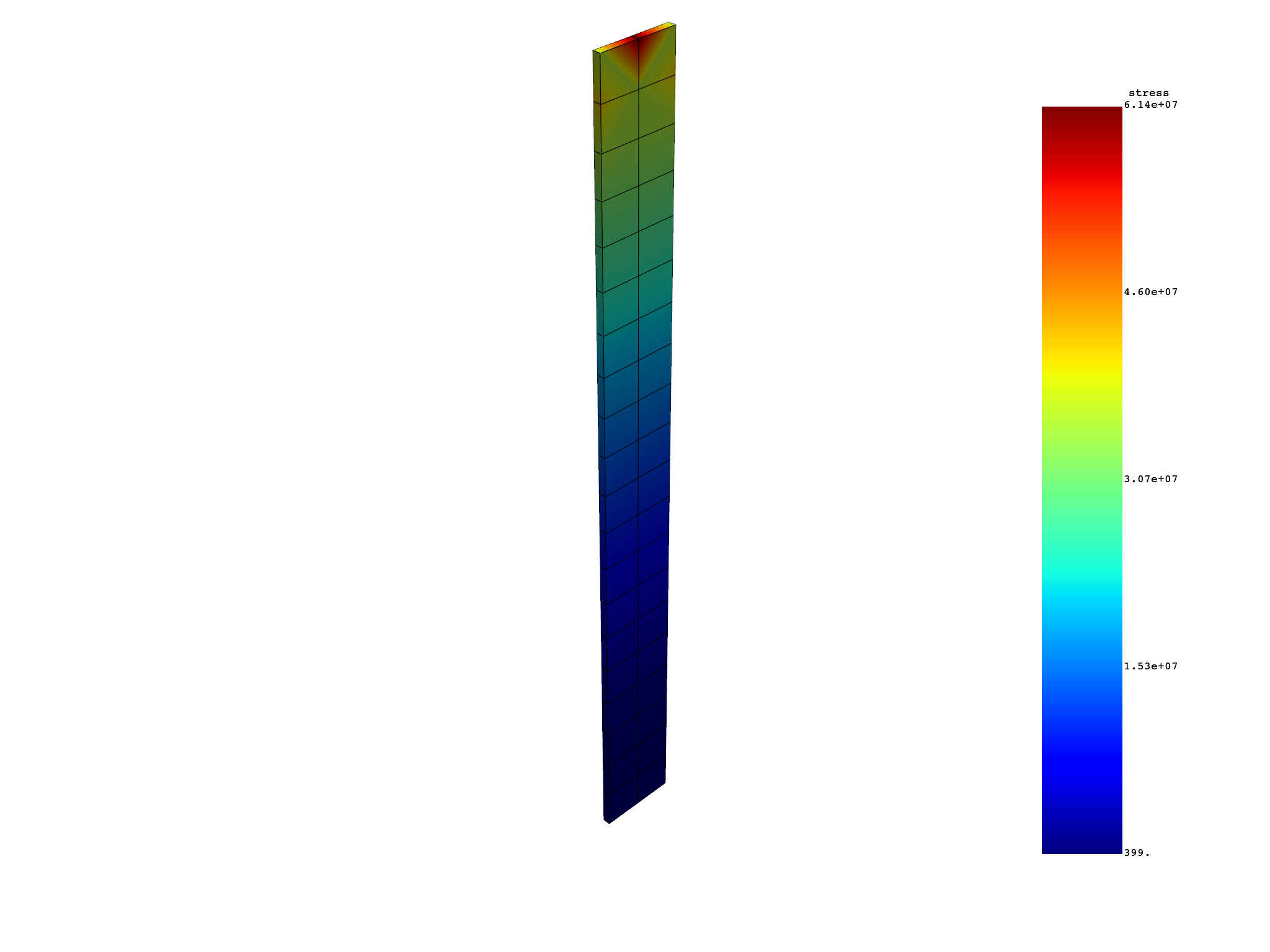Note
Go to the end to download the full example code.
Postprocess a result file for a transient analysis#
This example shows how to use the legacy PyDPF-Post API to postprocess a result file for a transient analysis.
Perform required imports#
Perform required imports. This example uses a supplied file that you can
get by importing the DPF examples package.
from ansys.dpf import post
from ansys.dpf.post import examples
Get Solution object#
Get the Solution object. This example loads a result file for a transient
analysis computed in Ansys Mechanical.
solution = post.load_solution(examples.msup_transient)
print(solution)
Transient Analysis Solution object.
Data Sources
------------------------------
DPF DataSources:
Result files:
result key: rst and path: /opt/hostedtoolcache/Python/3.10.19/x64/lib/python3.10/site-packages/ansys/dpf/core/examples/result_files/msup_transient_plate1.rst
Secondary files:
DPF Model
------------------------------
Transient analysis
Unit system: MKS: m, kg, N, s, V, A, degC
Physics Type: Mechanical
Available results:
- node_orientations: Nodal Node Euler Angles
- displacement: Nodal Displacement
- velocity: Nodal Velocity
- acceleration: Nodal Acceleration
- reaction_force: Nodal Force
- stress: ElementalNodal Stress
- elemental_volume: Elemental Volume
- stiffness_matrix_energy: Elemental Energy-stiffness matrix
- artificial_hourglass_energy: Elemental Hourglass Energy
- kinetic_energy: Elemental Kinetic Energy
- co_energy: Elemental co-energy
- incremental_energy: Elemental incremental energy
- thermal_dissipation_energy: Elemental thermal dissipation energy
- elastic_strain: ElementalNodal Strain
- elastic_strain_eqv: ElementalNodal Strain eqv
------------------------------
DPF Meshed Region:
393 nodes
40 elements
Unit: m
With solid (3D) elements
------------------------------
DPF Time/Freq Support:
Number of sets: 20
Cumulative Time (s) LoadStep Substep
1 0.010000 1 1
2 0.020000 1 2
3 0.030000 1 3
4 0.040000 1 4
5 0.050000 1 5
6 0.060000 1 6
7 0.070000 1 7
8 0.080000 1 8
9 0.090000 1 9
10 0.100000 1 10
11 0.110000 1 11
12 0.120000 1 12
13 0.130000 1 13
14 0.140000 1 14
15 0.150000 1 15
16 0.160000 1 16
17 0.170000 1 17
18 0.180000 1 18
19 0.190000 1 19
20 0.200000 1 20
Get Result objects#
Get displacement result#
disp_result = solution.displacement()
disp = disp_result.vector
Get number of fields#
disp.num_fields
1
Get data from field#
disp.get_data_at_field(0)
DPFArray([[ 5.61632273e-13, 3.10611157e-03, 5.94938168e-05],
[-1.05541516e-06, 3.10082257e-03, 5.95757695e-05],
[-8.84684396e-07, 3.71348576e-03, 6.27895677e-05],
...,
[ 6.28518184e-13, 4.03518595e-03, -6.41156710e-05],
[ 8.04525074e-07, 4.03115424e-03, 6.41884022e-05],
[-8.04523717e-07, 4.03115424e-03, -6.41884020e-05]],
shape=(393, 3))
Get maximum data value over all fields#
disp.max_data
DPFArray([[2.45659911e-06, 1.07453069e-02, 7.28477714e-05]])
Get minimum data value over all fields#
disp.min_data
DPFArray([[-2.45659907e-06, 0.00000000e+00, -7.28477714e-05]])
Get maximum data value over targeted field#
disp.get_max_data_at_field(0)
DPFArray([2.45659911e-06, 1.07453069e-02, 7.28477714e-05])
Get minimum data value over all fields#
disp.get_min_data_at_field(0)
DPFArray([-2.45659907e-06, 0.00000000e+00, -7.28477714e-05])
Get stress result for a tensor#
stress_result = solution.stress()
stress = stress_result.tensor
Check number of fields#
Check the number of shell and solid elements in distinct fields.
stress.num_fields
1
Get shell field#
shell_field = stress[0]
shell_field.shell_layers
<shell_layers.nonelayer: 5>
Get solid field#
solid_field = stress[0]
Plot contour#
stress.plot_contour()

Get elastic strain result#
elastic_strain_result = solution.elastic_strain()
elastic_strain = elastic_strain_result.tensor
# shell and solid elements are in distinct fields.
elastic_strain.num_fields
1
If the result file contains results, use this method to get the elastic strain result.
print(solution.elastic_strain())
Tensor object.
Object properties:
- location : Nodal
Elastic strain object.
Total running time of the script: (0 minutes 0.657 seconds)

